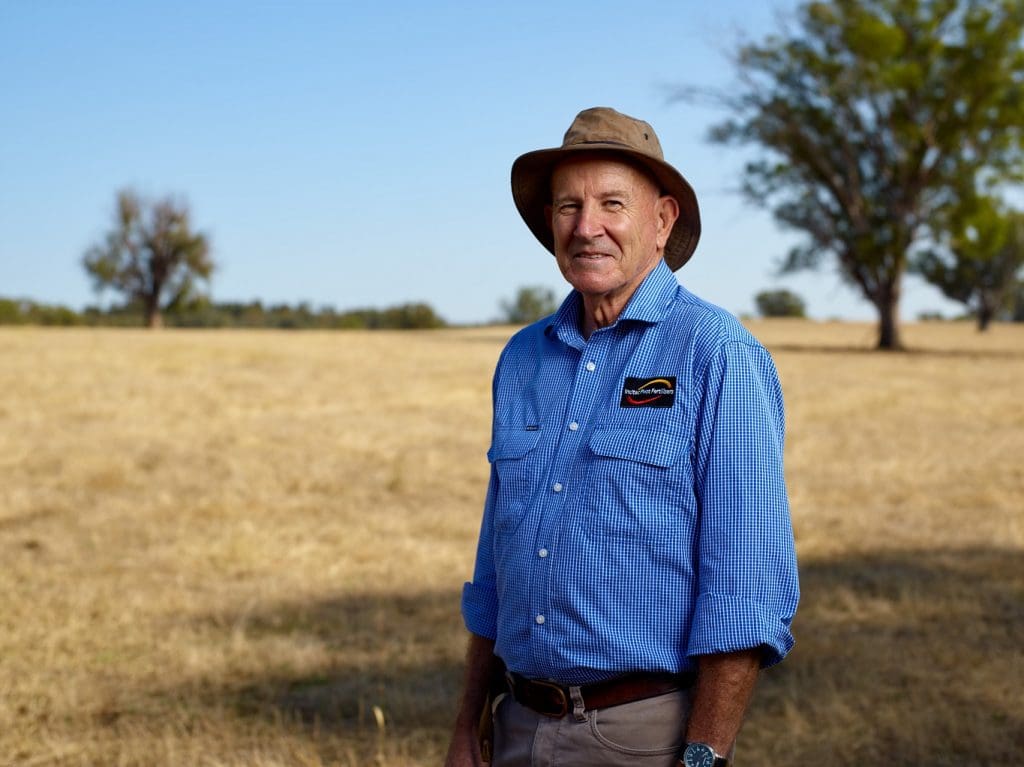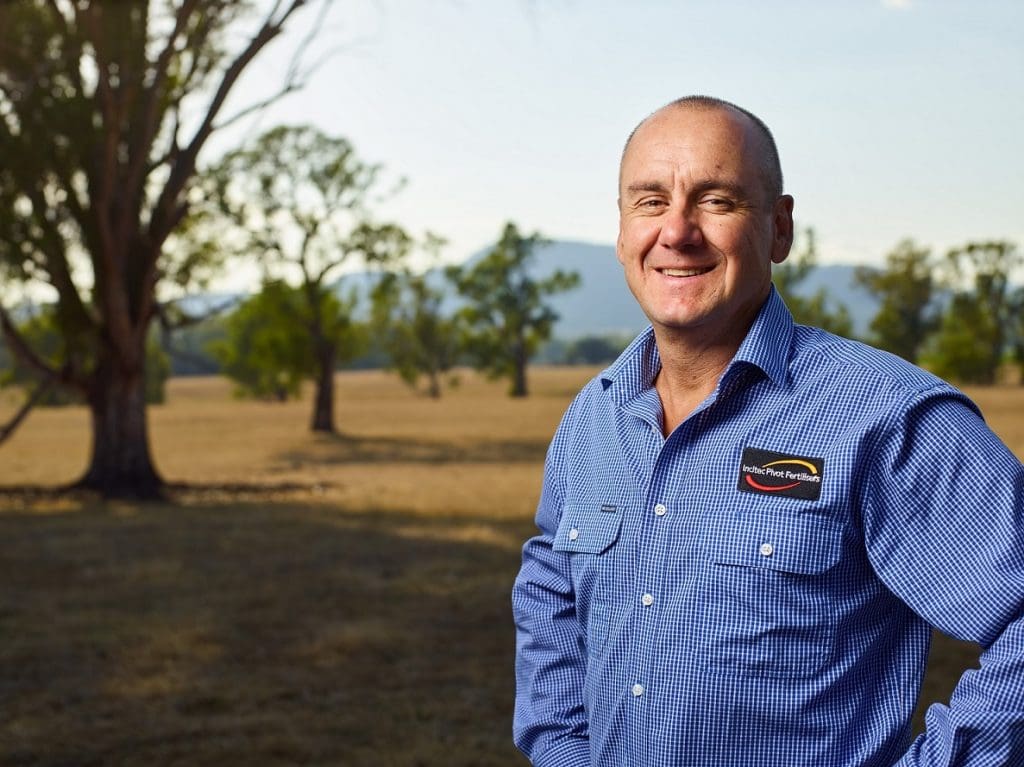AMPLE supplies of fertiliser will be available to meet the expected demand over coming months as growers prepare for this season’s winter crop planting, according to Incitec Pivot Fertilisers.
Unlike last year when supplies were cut short as a result of the North Queensland floods, the company has advised growers and resellers there are plentiful stocks of fertilisers this season.

Jim Laycock
Incitec Pivot Fertiliser technical agronomist, Jim Laycock, said while it had been tough in many regions, growers and agronomists were organising soil tests and nutrient budgets to develop fertiliser plans for this season’s canola, cereals and grain legume crops.
Mr Laycock said the long dry in eastern Australia should not, in itself, have depleted soil nutrient levels significantly, but growers should always test their soils to determine the nutrient status and fertiliser requirements.
“From what we have seen, under the dry conditions there doesn’t appear to be potential for loss of phosphorus, and nitrogen, generally, will stay in the soil profile if there’s some there to start with. If you had it in the soil to start with it basically should still be there,” he said.
“But, with dry conditions, you are potentially missing out on the mineralisation opportunities. The mineralisation opportunities have been few and far between. It is all about testing to see what you have to start with.”
Keep an eye out for nutrient depletion
Where the dry might have played a significant part in nutrient removal is with changes in farming practices that have altered the nutrient balance.
Recent analysis of nutrient removal has shown that significant changes may be taking place in soils where growers have been altering their rotations and more frequently cutting hay.
Incitec Pivot Fertiliser agronomist, Lee Menhenett, coordinated a program of grain and leaf tissue testing from 27 commercial crops in the Mallee and Riverine Plains this summer.
The results highlighted that any change to the farming system would mean changes to the balance of nutrients removed.
Switching from a grain harvest to a hay cut, for example, could increase potassium removal significantly, with around three times as much potassium removed from a tonne of wheat hay than from a tonne of grain in the crops tested.
The highest recorded from the testing program this summer was 168 kilograms/ha of potassium from an 11 tonne/hectare oaten hay crop.
Mr Menhenett said if the straw was taken after harvesting wheat or barley grains, potassium removal could easily double from the paddock.

Lee Menhenett
“Given that most growers are not applying potassium in their fertiliser programs, there is a need to at least monitor potassium availability where hay or straw cutting is happening more often,” he said.
Mr Menhenett said growers could monitor the availability of potassium to crops by leaf tissue testing during crop growth or soil testing.
“Another nutrient not often applied in fertilisers and being removed in considerable amounts from grain harvests is copper,” he said.
Based on the grain testing conducted this summer, 20-30 grams/ha of copper is potentially being removed annually from grain crops.
Mr Menhenett suggested growers consider applying copper fertiliser in test strips to assess the response to the micronutrient in crops.
“The overall theme from the results was the high level of variation in nutrient removal between and within crop types,” he said.
“One key point to note is that grain growers who are using a phosphorus replacement strategy based on a rule of thumb removal rate are at risk of over-estimating or under-estimating their phosphorus requirements by a fair margin, because the variation in removal is actually quite high.”
For example, the actual phosphorus removal from the nine wheat grain samples tested ranged from 2.3 to 4kg of phosphorus per tonne of grain.
Depending on the yield, the overall phosphorus removal per hectare was between 6 and 13kg/ha.
Mr Menhenett said growers looking to use a nutrient replacement strategy to guide phosphorus decisions should arrange their own grain testing from areas of known and stable yields.
For growers primarily harvesting grain, keeping up a zinc replacement strategy will continue to be important with the results showing more zinc removed in grain harvests than from hay crops.
“The variation in removal was quite significant, with some larger amounts of up to 35 grams of zinc per tonne of grain and more than 100 grams of zinc per hectare being removed from wheat grain in our tests,” he said.
“Using a starter fertiliser with zinc like Granulock Z each year is the best way to ensure crops are getting enough of the micronutrient, particularly on alkaline soils.”
Vetch hay nutrient removal
Mr Menhenett said growers who harvested bumper crops of vetch hay in 2019 should take care to assess soil nutrient levels before next season.
Vetch hay was shown to remove significant amounts of nitrogen and potassium and more phosphorus than oaten hay in the tests this summer.
“While vetch hay may provide additional nitrogen to the soil if inoculated, it is also likely to be removing significant amounts of nitrogen,” he said.
“The three vetch hay crops tested this summer removed between 19 and 32 kg of nitrogen per tonne. In one crop, which yielded 6 t/ha, that amounted to more than 180 kg/ha of nitrogen.”
Mr Menhenett said monitoring removal from grain and hay cuts was simple to arrange through the Nutrient Advantage laboratory and gave growers and their advisers the advantage of solid data to guide decisions.
“We’ve seen a number of trends from these 27 samples, but there’s nothing more valuable than your own results,” he said.
Source: Incitec Pivot Fertilisers

HAVE YOUR SAY